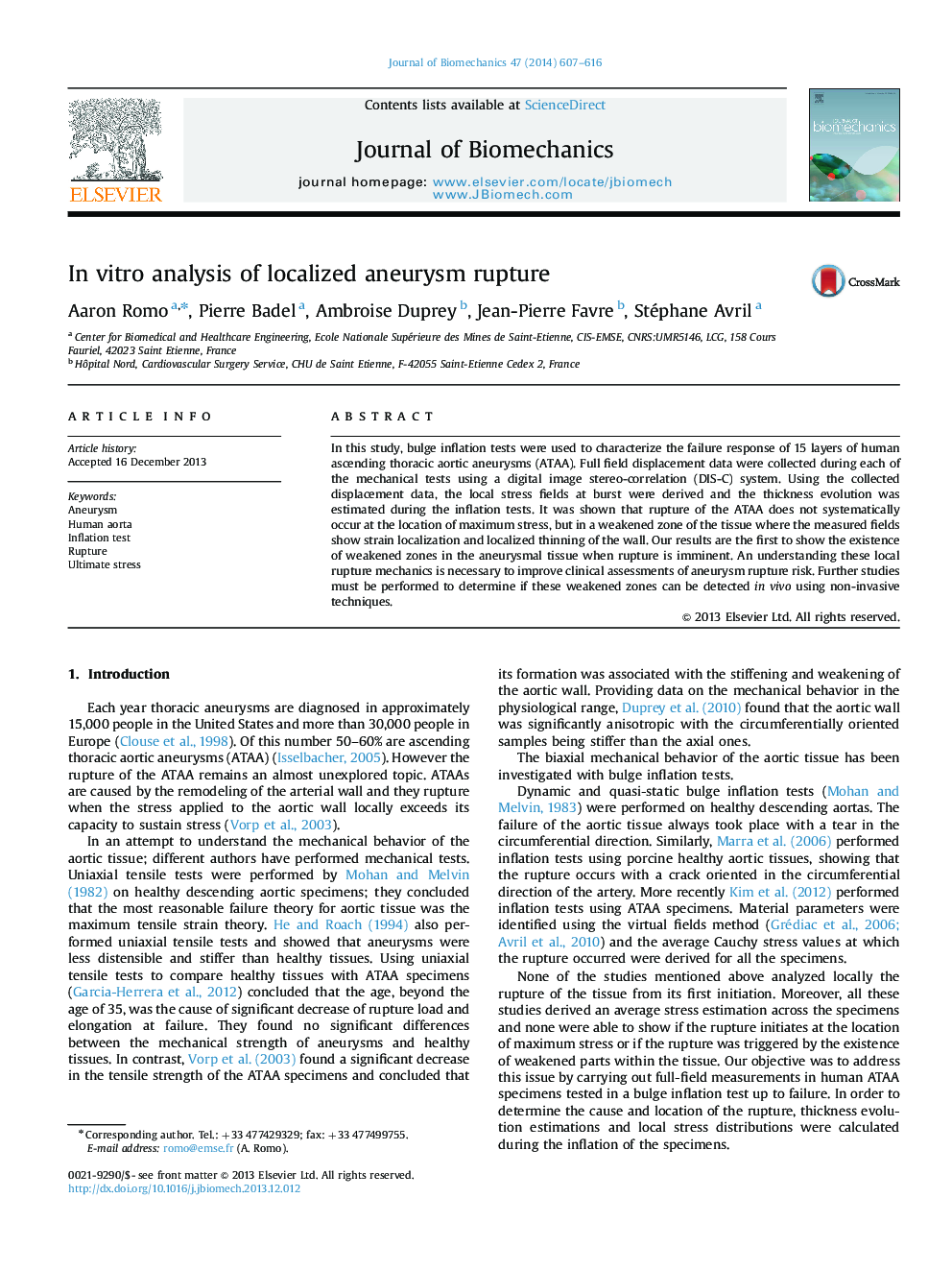| Article ID | Journal | Published Year | Pages | File Type |
|---|---|---|---|---|
| 10431454 | Journal of Biomechanics | 2014 | 10 Pages |
Abstract
In this study, bulge inflation tests were used to characterize the failure response of 15 layers of human ascending thoracic aortic aneurysms (ATAA). Full field displacement data were collected during each of the mechanical tests using a digital image stereo-correlation (DIS-C) system. Using the collected displacement data, the local stress fields at burst were derived and the thickness evolution was estimated during the inflation tests. It was shown that rupture of the ATAA does not systematically occur at the location of maximum stress, but in a weakened zone of the tissue where the measured fields show strain localization and localized thinning of the wall. Our results are the first to show the existence of weakened zones in the aneurysmal tissue when rupture is imminent. An understanding these local rupture mechanics is necessary to improve clinical assessments of aneurysm rupture risk. Further studies must be performed to determine if these weakened zones can be detected in vivo using non-invasive techniques.
Related Topics
Physical Sciences and Engineering
Engineering
Biomedical Engineering
Authors
Aaron Romo, Pierre Badel, Ambroise Duprey, Jean-Pierre Favre, Stéphane Avril,
